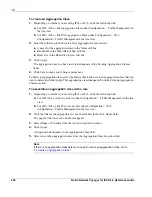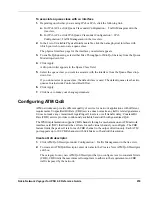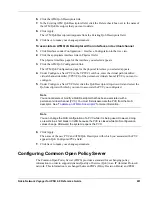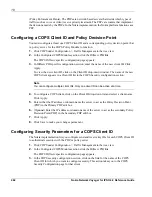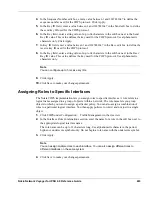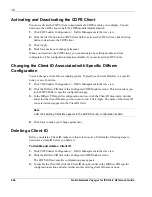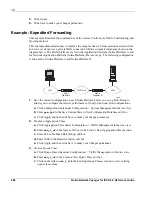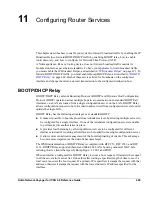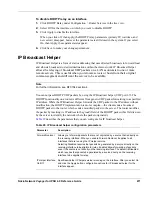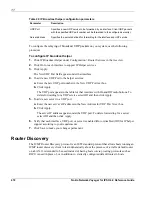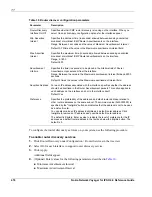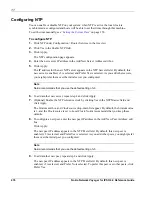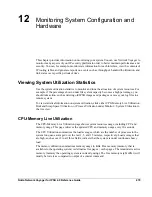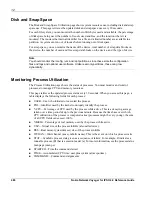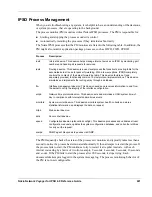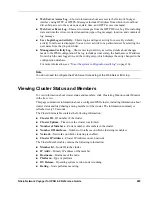
11
470
Nokia Network Voyager for IPSO 4.0 Reference Guide
Configuring BOOTP/DHCP Relay
You can use Network Voyager to enable BOOTP Relay on each interface. If the interface is
enabled for relay, you can set up a number of servers to which to forward BOOTP requests.
Enter a new IP address in the New Server text box for each server. To delete a server, turn it off.
Table 28
describes the parameters that you can configure for BOOTP relay
To enable BOOTP relay on an Interface
1.
Click BOOTP Relay under Configuration > Router Services in the tree view.
2.
Select On for the interface on which you want to enable BOOTP.
3.
Click Apply.
Additional fields appear.
4.
(Optional) Enter values for one or more of the following parameters, described in
Table 28
,
above.
Primary IP
—Enter the IP address to use as the BOOTP router address.
Wait Time
—Enter the minimum client-elapsed time (in seconds) before forwarding a
BOOTP request.
New Server
—Enter the IP address of the BOOTP/DHCP configuration server to which
to relay BOOTP requests.
5.
Click Apply.
6.
Repeat to relay BOOTP requests to more than one server.
7.
Click Save to make your changes permanent.
Table 28 BOOTP configuration parameters
Parameter
Description
Primary IP
If you enter an IP address in the Primary IP text box, all BOOTP requests received on
the interface are stamped with this gateway address. This can be useful on interfaces
with multiple IP addresses (aliases).
Wait Time
Specifies the minimum number of seconds to wait for a local configuration server to
answer the boot request before forwarding the request through the interface. This delay
provides an opportunity for a local configuration server to reply before attempting to
relay to a remote server. Set the wait time to a sufficient length to allow the local
configuration server to respond before the request is forwarded. If no local server is
present, set the time to zero (0).
New Server
Enables forwarding of BOOTP requests to a configuration server. You can configure
relay to multiple configuration servers independently on each interface. Configuring
different servers on different interfaces provides load balancing, while configuring
multiple servers on a single interface provides redundancy. The Server IP Address
cannot be an address belonging to the local machine.
Summary of Contents for IPSO 4.0
Page 4: ...4 Nokia Network Voyager for IPSO 4 0 Reference Guide ...
Page 182: ...3 182 Nokia Network Voyager for IPSO 4 0 Reference Guide ...
Page 206: ...4 206 Nokia Network Voyager for IPSO 4 0 Reference Guide ...
Page 248: ...5 248 Nokia Network Voyager for IPSO 4 0 Reference Guide ...
Page 266: ...6 266 Nokia Network Voyager for IPSO 4 0 Reference Guide ...
Page 286: ...7 286 Nokia Network Voyager for IPSO 4 0 Reference Guide ...
Page 350: ...8 350 Nokia Network Voyager for IPSO 4 0 Reference Guide ...
Page 478: ...11 478 Nokia Network Voyager for IPSO 4 0 Reference Guide ...

